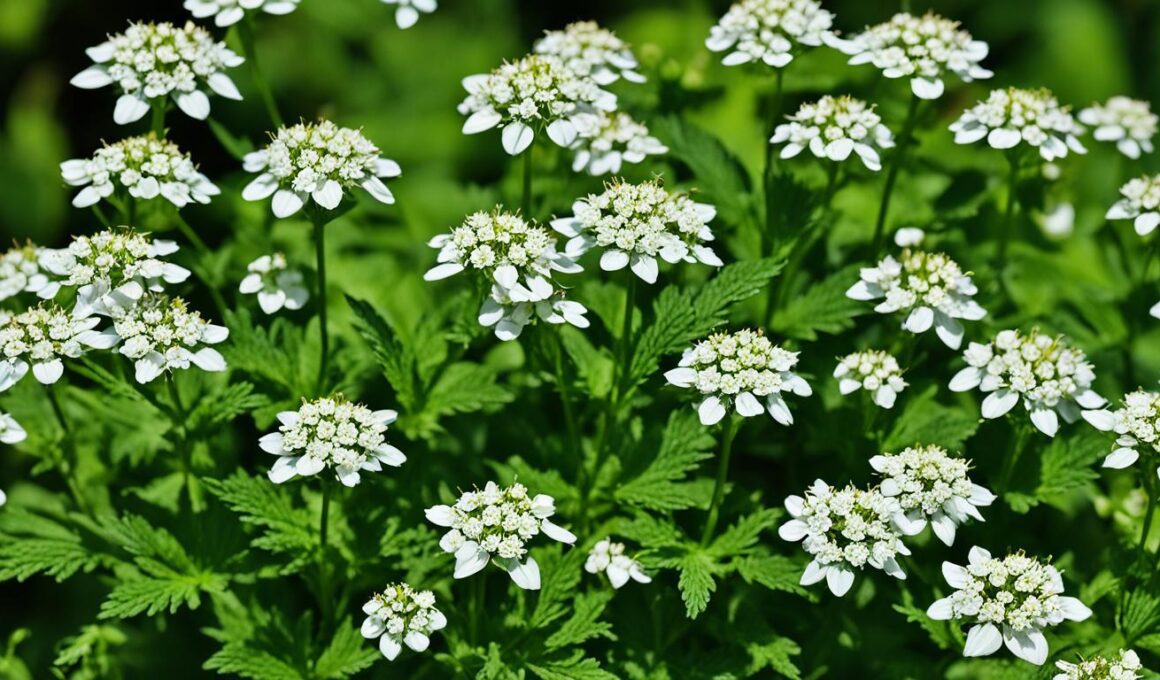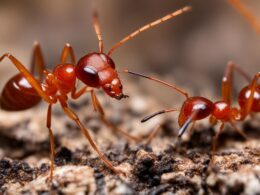Are you struggling to identify and manage small white-flowered weeds in your lawn or garden? Knowing how to distinguish these weeds is crucial to maintain the health and appearance of your outdoor space. Some white-flowered weeds can be beneficial, while others may be invasive or toxic. In this article, we will explore ten different weeds with white flowers, providing you with valuable insights on whether they are worth keeping or should be removed.
The information in this article is derived from reputable sources like David Beaulieu and The Spruce, ensuring accuracy and reliability. By understanding the characteristics of these weeds, you can effectively manage them, ensuring a vibrant and thriving environment.
To help you visualize these weeds, here’s an image of an example:
Japanese Knotweed (Polygonum cuspidatum)
Japanese knotweed, also known as fleeceflower, is a bamboo-like plant with fuzzy clusters of white flowers that bloom in the fall. Although initially brought to North America as an ornamental plant, it has become one of the worst invasive plants on the continent. To prevent an unkempt appearance, it is important to remove the messy and unattractive dried canes after the growing season. Japanese knotweed can grow up to 9 feet tall and requires full sun to partial shade to thrive.
Narrow-leaf Plantain (Plantago lanceolata)
Narrow-leaf plantain, also known as Plantago lanceolata, is a perennial weed that is commonly found in lawns and gardens. It is characterized by its lance-shaped leaves that grow in a clump, giving it a distinctive appearance.
This nuisance weed produces a flower stalk with a cylinder-shaped flower head at the top. While narrow-leaf plantain may not be as problematic as some other white-flowered weeds, it can still be an annoyance if left unmanaged.
On average, narrow-leaf plantain grows up to 10 inches tall when blooming, making it a relatively low-growing weed. It prefers full sun to thrive and can be commonly found in areas with well-drained soil.
If you notice narrow-leaf plantain in your lawn or garden, it is important to take action to prevent its spread. Regularly mowing your lawn and keeping it well-maintained can help control the growth of this weed. Additionally, manually removing the weed by pulling it from the root can be an effective method of managing narrow-leaf plantain.
To visually identify narrow-leaf plantain, look out for its lance-shaped leaves and cylindrical flower head. Taking proactive measures to manage this weed will help ensure the health and aesthetics of your outdoor space.
Note: The image above illustrates the appearance of narrow-leaf plantain.
Queen Anne’s Lace (Daucus carota)
Queen Anne’s lace, also known as Daucus carota, is a biennial weed that features delicate white flowers with a lacy appearance. Its name pays homage to the intricacy of its bloom. Similar to carrots, Queen Anne’s lace has a long, carrot-like taproot. When you pull this weed, the familiar aroma of carrots fills the air, aiding in its identification.
This biennial weed spreads aggressively by reseeding itself. To prevent its invasion, it’s crucial to remove the flower heads before they have a chance to go to seed. By doing so, you effectively hinder its ability to spread throughout your garden or lawn. If you notice well-established Queen Anne’s lace plants, it’s recommended to dig them out from the ground, targeting their taproots. This method ensures the complete removal of the weed and limits its reemergence.
Queen Anne’s lace can reach heights of up to 4 feet and thrives in areas with full to partial sun exposure. By implementing proper removal techniques and diligently managing this weed, you can maintain the integrity and beauty of your outdoor space.
Can Unripe Cantaloupe Affect the Growth of Weed With Small White Flowers?
If you are concerned about the effects of unripe cantaloupe on weed growth, here are some tips for unripe cantaloupe to keep in mind. Be sure to properly dispose of any unripe cantaloupe that may attract pests or interfere with the growth of other plants, including weeds with small white flowers.










